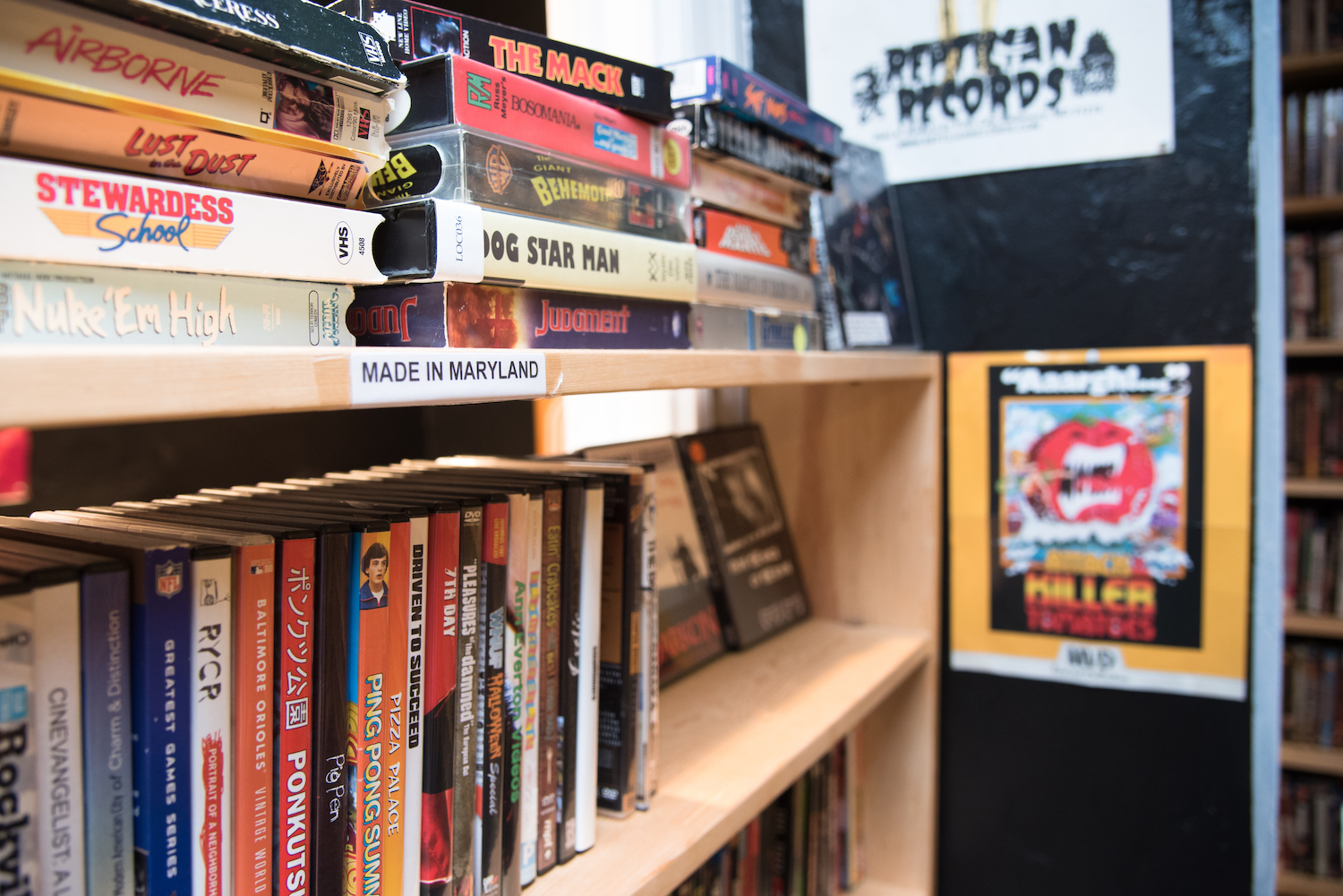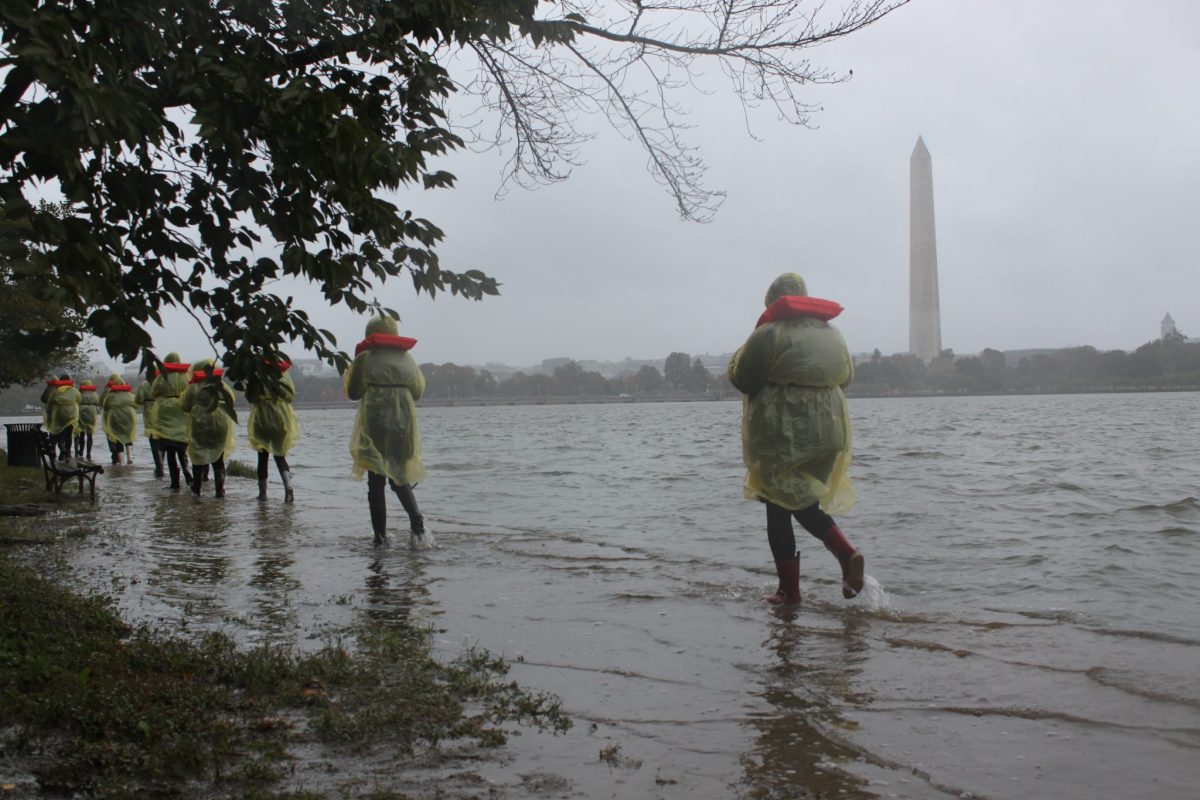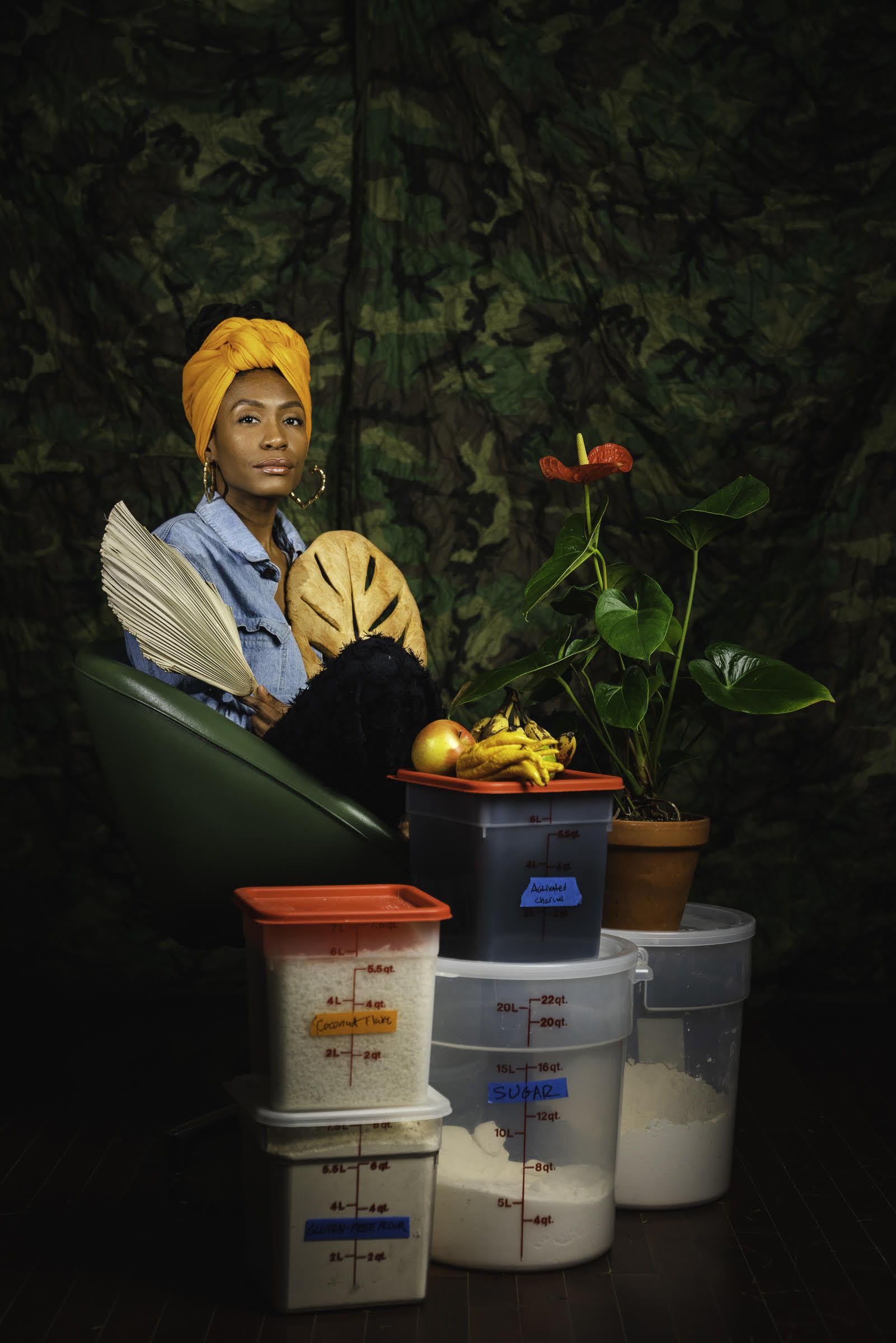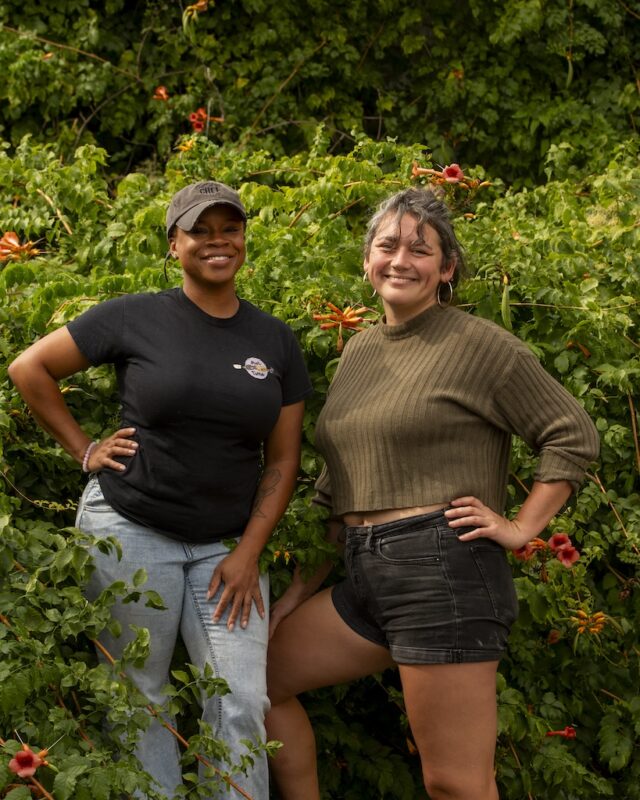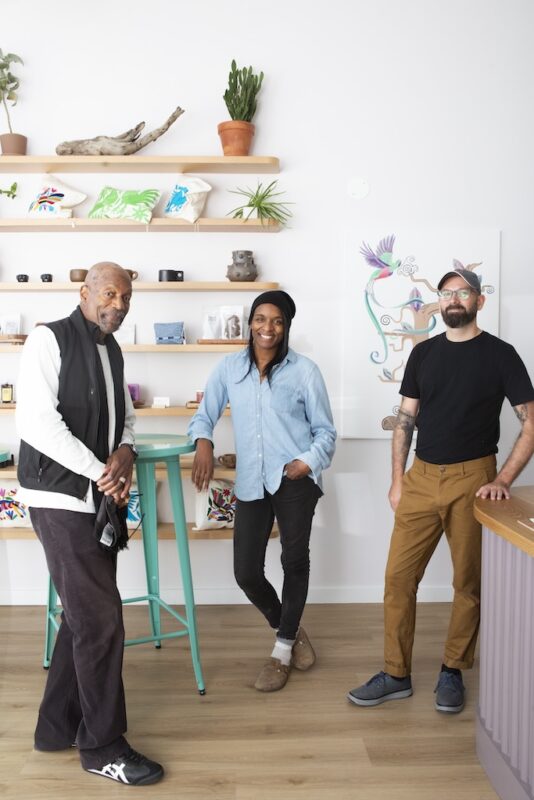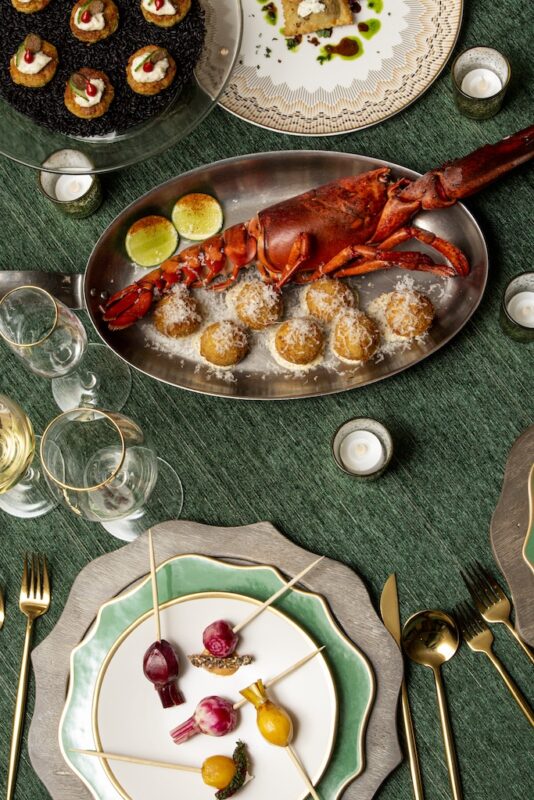Krystal Mack wants to stop using food as a means of escape. The artist prompts audiences to imagine food as a tool to be present with yourself, your city, and your history. Mack’s interdisciplinary body of work is uniquely grounded—despite boasting comestible design and cultural innovation projects that advocate for racial justice and food access, it also just feels, tastes, and sounds good. The native Baltimorean and culinary artist does the heavy lifting of meeting you where you are, creating inviting art experiences that literally and figuratively feed you.
Her previous culinary projects, such as BLK//SUGAR and KarmaPop, revved Baltimore’s imagination for food as metaphor, informing her recent site-specific visual and sensory work at the Walters Art Museum, titled Black Women, Food, and Power. Studio IAO, short for “In Absence Of,” is Mack’s ongoing project to create the space previously denied to her to freely create and exhibit work. Her installation and curatorial work involves convening to see the unseen, such as Voyage, an edible presentation from various traditions in the African diaspora to pair with the Baltimore Museum of Art’s show Generations: A History of Black Abstract Art.
In Black Women, Food, and Power, the artist explored her relationship to the past and present of Black women in American foodways, from the slavery endured by chef Sybby Grant and many others at 1 West Mount Vernon Place (formerly the Hackerman House, the mansion connected to the Walters Art Museum) to Baltimore’s current epicurean landscape. For a couple of weeks in November, Mack’s site-specific installation, “Hearth & Home,” affixed to the 1 West fireplace, overtook the walls of the hearth with dried flowers and cement cooking utensils. Mack’s artist talk featured a panel with Dr. Psyche Williams-Forson, scholar and author of Building Houses Out of Chicken Legs: Black Women, Food, and Power, and Gabrielle Etienne, documentary filmmaker and food justice advocate, followed by a wine tasting with Nicole Rodrigues. Audiences were invited to toast to Sybby Grant.
I spoke with Mack about new meanings of survival, healing, and honoring the past.

From Black Women, Food, and Power at the Walters’ 1 West (photo by Derrick Beasley)
E Cadoux: What is Black Women, Food, and Power, and was there a moment that incited this interaction with the Walters?
Krystal Mack: Black Women, Food, and Power is the name of the book by Dr. Psyche Williams Forson that I was reading in February of 2018. But to me, Black Women, Food, and Power is a conversation about the history of Black women in American foodways. I knew I had to name it Black Women, Food, and Power because I was thinking about Sybby, and how she, even though her circumstances were that of an enslaved person, was able to find dignity and pride in her work. She used that pride and dignity to find her power. Even in enslavement, it wasn’t uncommon for cooks to be able to read and write because they had to, because they needed to create recipes and cook for the families they were serving. But it’s not lost on me that if she was not in that position she might not have been able to read or write.
I always see recipes as a time capsule. I love to read recipes from my ancestors or my elders because you’re going back in time to experience what it was like for this person. It’s almost like a poem, or a little archival piece of work; it transports you back, it’s a form of time travel. Knowing that the narrative of Black people for so long was not preserved to suit white people or serve white supremacy, and finding things that still have heart in them, to me that is so special. That makes me be like, people need to see this, Baltimore needs to see this. People need to know how special this woman’s work is and be inspired by it. When I came to 1 West and saw Sybby’s writing, I was like, “This is me.” I saw myself in her. The writing was in cursive, it was beautiful, it reminded me of my grandmother’s handwriting. I thought, she needs to be seen more, she needs to be acknowledged, she needs to be honored—how can I honor her? By letting everyone taste her work. I can bring her work to the forefront; I have the opportunity to do this. And that’s a very rare opportunity, too.
What has it meant to you to get to know Sybby Grant? And what does it mean to you to show this site-specific work at the Walters?
I can’t even say I got to know her, because I don’t know her—that was the part that was even more intriguing to me. I started to wonder what her life was like.
To me, one of the greatest acts of love is to cook for people. To cook for someone, to nourish someone, to care for someone that way. It’s a very intimate thing, and I thought about Sybby and I was like, who cooked for her? No one cooked for her!
Imagine you’re her, cooking all day. When we think about cooking we think about it with a contemporary lens: If it gets too hot you can open a door, if it gets too smoky you can open a window or turn on a fan. But in this case, you’re in a basement, it’s hot, burning yourself because you’re working with fire in a hearth-style situation. It was a lot more dangerous and exhausting. You have to be up early to make bread. You can’t just go to the store. You could go to Lexington Market back in the day, but that cuts into your day and if you’re cooking breakfast, lunch, supper, and dinner, that’s a lot of work for one person. You’re making all of these meals, doing all these dishes, and are too exhausted to make a meal for yourself.
She cooked with so much love and care for this entire family and their friends at their frequent dinner parties. It made me realize I didn’t know her. It made me think of all of the other enslaved people who didn’t get to have a narrative of their own. It made me wonder if she ever fell in love, it made me wonder what her favorite color was. It made me wonder all of these things that I would never know because to someone else she was property and not important enough to be recorded in that way. She had her own personal identity separate from her enslavement.
With the realization that you can’t get to know Sybby Grant, what is one thing her memory has taught you?
In Dr. Psyche Williams-Forson’s book, she talks about Black women cooking as cultural work. I think of that a lot with my work and my friends. I think of us being strong Black women but also having feelings and having families, always up in arms, ready to fight for the cause, whatever the cause may be, because we are often the ones most affected, and not being able to have humanity enough to care for ourselves, our feelings, our families and friends. So it was a reminder: Don’t let your humanity be forgotten.
It made me stop and think, what are you doing to preserve your humanity? Instead of being just a tool for creating this work or even just a tool for this system we live in. How am I resisting, and how am I surviving by thriving? It made me think, what brought Sybby joy?

Krystal Mack at Black Women, Food, and Power talk (photo by Derrick Beasley)
It’s really beautiful to hear you talk about preserving humanity, and not only surviving but thriving. Tell me about your installation, “Hearth & Home.” Where is it, what is it made of, and how does it relate to preserving your humanity and the memory of Sybby Grant?
The work of preserving your humanity continues to survive even when you’re dead, like the flowers that make up “Hearth & Home.” The flowers I chose are lots of dried palm and painted palm leaf, very exotic for the region, and very beautiful when they’re alive. They have an heirloom quality that you wouldn’t necessarily think of. When we talk about heirlooms we don’t think of tropical flowers, we think of baby’s breath and roses. And those are heirlooms, but for whom? I thought it was a beautiful way to honor her and her point of origin as a person of the diaspora, but to also show that even though she is long gone there is still beauty in her existence.
The actual concrete elements of the work, the tools of resistance and survival, those remain as well. They’re there for the next generation to pick up, or just leave them in honor. I wanted to cast them in concrete because that is a common medium for monuments. I wanted to find a way to bring a monumental element in the space, but not too much because there’s a lot of other art in the room.
Oftentimes the narrative of slavery we see is that of plantation slavery, because that was the most common one, but we are talking about city enslavement here which is really different. That was another reason I wanted to use concrete as well.
“Hearth & Home” grows out of the fireplace and takes over the walls of the fireplace, as much as the Walters would allow it to. Sybby Grant wasn’t coming in the dining room; she wasn’t allowed in the dining room. She sent the food up on a dumbwaiter and other servants served it. The moss grows out of the fireplace—it’s beautiful to have something that is seen as invasive or not necessarily wanted or not normally seen inside of a home.
As an artist and observer of how history lives in the present, is there a part of Dr. Psyche’s Building Houses Out of Chicken Legs: Black Women Food and Power you’ve seen modeled recently?
There’s a whole part of Building Houses Out of Chicken Legs about a woman who does not want to eat chicken in front of white people, and I just had a conversation with a woman while doing an event recently who felt the same way. She worked at the venue, was a Black woman, and said, “Yeah but when you do this event, just no fried chicken. Then she said, “I just don’t feel comfortable eating fried chicken in front of white people.” And I said, “Wow, that makes me really sad for you.” And she was like, “Well, you don’t have to be sad about it!” And I was like, “Well, I am, because it means that you don’t live your life freely and you feel like the gaze of whiteness is always on you, and that makes me sad.”
She was kind of offended about it, but I was like, it’s the same as a queer person not repping a pride flag because of how other people will perceive them or how they will be treated differently. We should be able to move about freely and embrace our culture freely and not be afraid.
Dr. Psyche coming and talking about food stereotypes ties in so much to the lost history, because people are afraid to look back. I went to a town hall at Lexington Market and they mentioned, in passing, this used to be a place where slaves were sold. And this one woman yelled, “Tear it down! We don’t need none of those old slave monuments no more, we need to just let it go!” It was an older Black woman. She’s coming from a very hurt place. And I find that so many older Black people, and a lot of younger Black people too, don’t want to talk about slavery because there’s so much shame and pain tied to it. But I think there are also stories of power and empowerment and survival in that and we should be proud of those things. Nobody is happy about it, no one wants to talk about it, but in order to move forward in a way that is healthy and productive, we must.

Installation view of “Hearth & Home” by Krystal Mack at 1 West Mount Vernon Place
Your pieces “Okra in My Palm” and “Sorghum in my Mouth” illuminate a need to recognize Baltimore’s history of enslaving people, and to honor those who endured that trauma. How does Sybby Grant’s story and your work in honor of her converse with the rest of your work?
I feel like my pivot into art, becoming an interdisciplinary artist working with food to explore ideas, came from a need to have this conversation with people and not necessarily knowing how to do it. Using things that I enjoy—food, flowers, design—to spark that conversation, especially as a native Baltimorean, seeing the changes to the city over time and not being able to process what I was seeing. Like anyone else in my position would do, I turned to art to find guidance.
The elements that I chose were food-based for a reason. Those are foods of the African diaspora that came over in the slave trade. There’s a belief that when people were taken from Africa they had seeds on them, and that isn’t really the reality. In my research I found there was real strategy used when they were taking slaves from Africa. It was like, we know we want gold and need gold mines, but we need to know how to mine and work with gold, so we’ll get this person who will be our master goldsmith. We can sell this person as a goldsmith, and we can sell this person as someone who knows how to grow okra, or grow sorghum, all of these grains that are coming from the African coast. There was a lot of strategy in how to kidnap people, and the resources of that land.
“Okra in My Palm” is an acknowledgment of that, as well in “Sorghum in my Mouth.” There’s a disconnect with those foods. You hear people talking about sorghum in the South, but not as much in the Mid-Atlantic. You don’t hear people talking about sorghum because of the Great Migration, because people were trying to leave all those old customs behind: “I’m trying to be assimilated, I don’t want to talk about growing because there’s too much trauma tied to the practice of growing for me and my people.” They wanted to work in a factory, they wanted to be the farthest away from a farm as possible cause it was too traumatizing. But unfortunately because of that there was a lot of history lost. A lot of families lost farms and our connection to the land. And then you also add to that the industrialization of food. It left Black people, I feel, in a very dangerous situation. When you lose your identity as far as losing the culture, which food plays a big role in, you can easily be told by corporations like Popeyes how chicken should taste. People telling you what your culture is, telling you that your culture is certain types of soul food, telling you how often you should eat it. And those were things that were specifically at the Baltimore slave wharf, whether it was from people being sold into slavery down south to New Orleans or coming up north after emancipation, either way culture was lost. Connections and bonds were lost.
How do you confront the dangerous situation with food you mentioned, one where Black people are being sold their culture, one where connections were lost?
We’re taught that food is something that’s supposed to bring joy and be consumed quickly, be consumed mindlessly, and be consumed in a very lush way, and I feel like we are moving farther and farther away. There’s a battle back and forth between eating for escapism and eating with intention. My goal with my practice is to show people how food impacts everything that we do, and maybe make people be a little more mindful with how we engage with it. How we go into a restaurant space and treat the people who are serving us or making our food, or supporting businesses, or where our food comes from and who’s growing it. It’s so much more than something we consume and nourish our bodies with. If we were to really see it for its true potential we could be fulfilled beyond appetite. I hope my work can lend a different perspective on place, people, and history, and their daily interactions with food.
 Krystal Mack (photo by Matt Freire)
Krystal Mack (photo by Matt Freire)
As a culinary artist who is thinking about deeper spiritual connection to food, what advice do you have for people who are trying to connect more creatively, holistically, or intentionally with their food?
I like to sometimes write down the things that I ate each day and think about the mood I was in. I came across this guy who made these graphs of his level of productivity, his level of activity, and his level of socialness, but it wasn’t related to food at all. I thought it would be really cool to document, almost like a mood board, how I was feeling today. What did I eat today? Was it salty, sweet, sour? Did I eat it alone or was I with someone else? Did I eat standing up or did I sit down for my meal?
For anyone wanting to get a deeper connection to the food they’re eating, just documenting what they eat and who they are eating with and how that makes them feel goes a long way. There are so many food memories I have that are heightened by who I was eating it with. It could have been a peanut butter and jelly sandwich, but because of the person I was eating it with it could be the best fucking peanut butter and jelly sandwich I’ve had in my life.
The more I start documenting what I’m eating and what I’m doing, it sets the tone for intention and it makes me more intentional about who I’m spending time with, how I feel spending time with that person. It’s kind of like that saying, “People will forget what you said but people will never forget how you made them feel.” I might forget how something tasted in the moment but I will remember I really enjoyed my time at that restaurant. Or I forgot what we made but I really enjoyed cooking with my friend or for my friend.
I’ll also try to figure out if this experience made me happy, will it make other people happy? How can I do this on a scale that is sustainable to me but also allowing other people to find joy in the food the way I found joy in it?
As far as a social element, and getting people to be more engaged, finding the sociopolitical connection to food. A lot of people say food is not political because they want to use it as a tool for escapism, but the reality is that everything is political. I want people to see that. Food can come off like a harmless tool, and then you pull back the curtain and show people the ugly truth and they’re like, “I had no idea!”
It’s sneaky.
It’s sneaky like that! And there are people who are like, “Damn but I love Chik-fil-A so much!” But there’s a layer of politics to that food and you really have to pay attention to where your money is going.
Those would be my ways to get people engaged: documenting, being more conscious of how they’re engaging with their meals, exploring their food more politically.
What is feeding you right now in your art practice?
The healing work. I feel like I’m being healed by doing this work. When I was at Marble House Project, I did an 18-course dinner focused on healing—my personal healing, and also healing generational traumas in my family. I feel like I never would have been able to express any of those things if I hadn’t just started doing the work and questioning the role that food played in my life and thinking about how I want to engage with it.
I’m thinking about how we engage today and how we know only one side of people. I was thinking about how I was portrayed during the BLK//Sugar period, looking back at KarmaPop, and I was like, “This is what I’m saying and this is the space I have.” I could be having deeper conversations with my work, and I’m not doing that—why? It made we feel like I wanted to challenge myself more. There are people out here doing work, and I’m not trying to change the world, but how can I change the community I’m in? How can I change how I see myself? How can I learn more about myself?
I wanted work that would challenge me to work outside of my comfort zone, challenge me to heal, challenge me to learn more about the city I grew up in, the people I engage with. This whole year has changed me. I am changed every day when the work levels up. It’s not a huge change, but it’s noted.
The work has challenged me to not fall for imposter syndrome. I’m very much someone who is led by the work. Sometimes it’s great, sometimes it’s not, sometimes it’s for the public and sometimes it’s for me. That’s what this work has been for me: just healing and a deeper connection.

Find Krystal Mack’s work on Instagram at @absence.of, @palatepalette.co, or @krystalcmack, and at krystalcmack.com.
Images of “Hearth & Home” by the artist.
